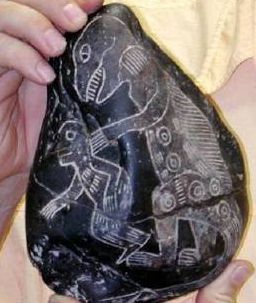During the early ages until the 1800's they would use the "puddling" method of converting pig iron to cast and then to steel.
The high carbon iron melted at a much lower temperature than steel. The cast iron was melted and then stirred with a steel rod exposing the high carbon iron to oxygen in the air. This burned off the carbon but introduced oxides into the melt. As the carbon burns off, the melting temperature rises and the metal melt becomes "pasty". When the iron monger was satisfied with the consistence, it indicated sufficient carbon was burned off and the melt allowed to solidify, oxide inclusions and all. The mass was heated and hammered into bars. The oxides melt at a lower temperature than the steel and are driven toward the free edges. The oxide left in place are known as stringers. The bar was cut, folded and forge welded to form another bar. Each cutting, folding, heating, and hammering reduced the amount of oxide left in the resulting bar. After the process was repeated six or seven times, the resulting steel was "nearly" free of oxide stringers. I've read that a man could produce about 50 pounds of steel in a day.
Best regards - Al












